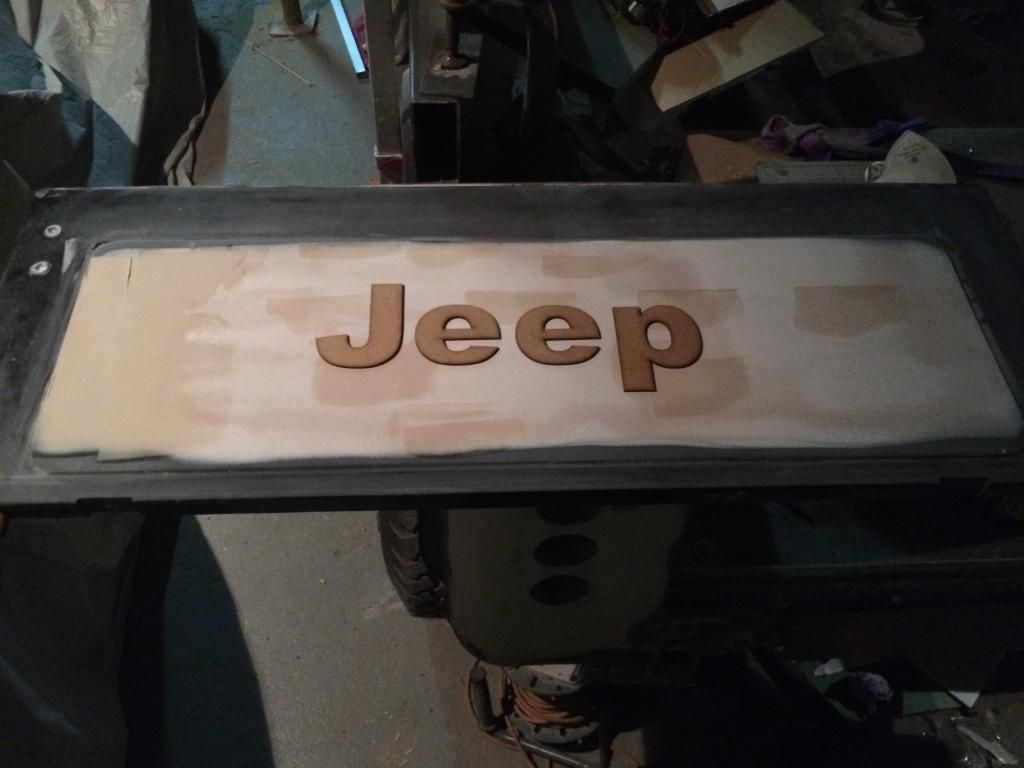corrado vr6
|
| posted on 15/10/14 at 10:35 PM |

|
|
Calling all Fibreglassing experts
Hi there,
I'm looking to make a mould of this tailgate with these 3mm thick letters attached

I have been using on other parts so far 450g (1.5 oz) Chopped Strand Matting, I'm thinking maybe this is a bit thick for my first layer to get
the correct detail around the letters or do people think I will be ok??
If not suitable should I use a thinner matting for the first layer of the mould? Obviously I'll be gel coating first.
http://r1indy7.wordpress.com/
|
|
|
|
|
Alan B
|
| posted on 16/10/14 at 12:43 AM |

|
|
I'd even go for tissue first...get it right into the corners...also try and get some draft on the edges of the letters too.
Alan
|
|
|
Carbonman
|
| posted on 16/10/14 at 03:34 AM |

|
|
Are the letters just stuck on? If they are you need to make sure there are no gaps underneath. The slightest gap and gelcoat will seep underneath
giving you a mechanical lock.
You will also need to seal that bodyfiller and the letters if they are what looks like MDF. The gelcoat will draw the styrene out of the bog and stick
to it even if your using wax as a release agent.
You could get a way with a really heavy coat of PVA release agent sprayed on but its still risky. The whole thing really needs spraying with 2K primer
followed by 2k top coat. That should also seal around the letters and give a small fillet making release easier. If you use cellulose paint you will
have the styrene issues again.
The 2k needs plenty of time to fully cure before pulling a mould as the exotherm will generate heat in excess of 60 degrees C, this can soften the
paint and cause release issues.
Standard layup would be tooling gelcoat (probably 2 coats on a commercial mould) 1x 100grm CSM this will conform better to the detailed areas and
prevent print through onto the gelcoat surface followed by 3/4 layers of 450 grm CSM.
If you have sharp corners/returns like around the letters you can tear up some CSM, mix with some resin to form a paste and brush that in before the
first layer of mat.
You would also add flanges on a commercial mould but these may not be necessary if its a one off your doing.
Apologies in advance if I'm telling you things you already know.
Carbon Copies Ltd
|
NOTE:This user is registered as a LocostBuilders trader and may offer commercial services to other users
|
Irony
|
| posted on 16/10/14 at 04:29 PM |

|
|
What ^ he said. Nothing is more irritating than mechanical lock. I ruined many parts by not doing the prep properly.
|
|
|
corrado vr6
|
| posted on 16/10/14 at 06:55 PM |

|
|
Great thanks for all your replies
So would this be what I need for my first layer?
http://www.ecfibreglasssupplies.co.uk/p-739-ecc-100-chopped-strand-matting-100g.aspx
Would I need to use this as my first layer again when laying up against my mould I would have made previously?
Thanks again
http://r1indy7.wordpress.com/
|
|
|
Carbonman
|
| posted on 16/10/14 at 07:10 PM |

|
|
Yep. If you use a lighter weight cloth against the gelcoat there is much less chance of print through. The larger fibres in the heavier cloths can
show through the gelcoat spoiling the surface finish. Not a problem if the parts being painted but not good if the gelcoat is the final finish.
Warren
Carbon Copies Ltd
|
NOTE:This user is registered as a LocostBuilders trader and may offer commercial services to other users
|













